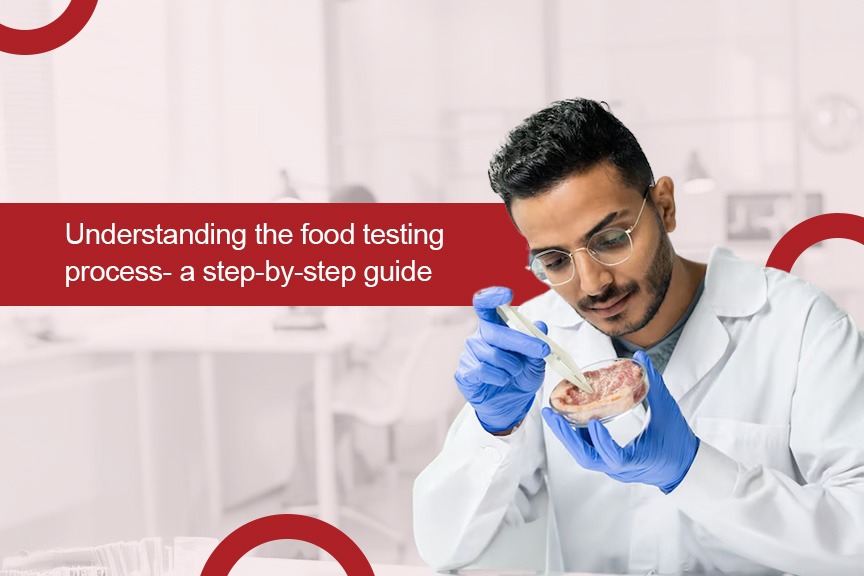
Introduction:
Food quality and safety are the main concerns in these times, where food contamination and adulteration have become very common. This leads to the emergence of the need for knowledge about food testing processes.
There are various laboratories in Mumbai and elsewhere, such as Dr. Amin Controllers Pvt. Ltd. – an Alfred H. Knight Co., that work continuously to ensure that the food we consume is safe and have established several steps in the process of food testing. In this blog, we are going to take a look at those steps.
Step 1: Sample Collection
The process of food testing starts with the collection of samples, also known as sampling. It involves collecting smaller portions randomly from a large lot, mixing them, and making a composite sample that represents the whole lot. The number of samples is ensured to meet the volume requirements for the test item.
The date of manufacture and lot number are also checked, and uniformity of the sample is ensured. It is ensured that the sampling container is made of either hard glass or polyethylene products, according to the item that has to be inspected.
After the collection of samples, a sampling record has to be filled out, indicating the following:
- Name of sample
- Sampling unit
- Address, date, and lot number/ batch number
- Sampling and packaging conditions
- Name of sampler
With this, the first step in the food testing process is complete.
Step 2: Sample Preparation
After the collection of samples, they need to be prepared for testing, as they often contain impurities or components that interfere with the testing procedure. Therefore, before the analysis, it is important to consider:
- Sample’s characteristics
- Tests to be conducted
- Principles of analytical method
- Properties of the potential interferents
- Properties of the target substance
The main process at this stage is to produce a homogeneous sample by means of grinding, mixing, blending, etc. Proper storage of the sample is essential throughout the analytical process, up to the point of reporting, in order to maintain sample integrity.
In a few samples, the processes mentioned below are also conducted to separate the analyte from the interferent.
- Solvent Extraction Method:
With the help of special liquids called solvents, the required substance is separated from the mixture and then examined.
- Organic Matter Decomposition Method:
The sample is heated so that the unwanted materials escape with gases or water. The resultant mixture is left with tiny pieces of metal that we can study. This can be done in two ways:
- Dry Ashing: burning it until it turns to ash or
- Wet Digestion: mixing it with strong liquids that help break it down.
- Distillation Method:
The sample is separated into different parts by turning it into a gaseous form. The mixture is heated, and the parts that evaporate are collected as they cool back down. This way, the desired component is separated from the unwanted materials, and we can later study it.
With this, step 2, i.e., sample preparation, is complete.
Step 3: Choosing The Testing Method
The selection of the testing method is based either on the type of the sample or client / regulatory requirements. The testing method needs to be selected with utmost care as it directly affects the reliability and accuracy of the results of the test. The food testing lab selects the appropriate method based on its technical competency, as well as the scope and nature of the sample to be tested. Here’s a brief list of the different methods of testing:
- Microbiological Testing:
The microorganisms that affect human health are detected and identified by a microbiology testing lab to determine if the food is safe for human consumption.
- Chemical Testing:
In this method, a chemical testing laboratory identifies different chemicals present in food samples, including pesticides, heavy metals, contaminants, and additives.
- Nutritional Analysis:
The macro- and micronutrients are assessed in food samples to provide valuable information to consumers and regulatory bodies.
This wraps up step 3.
Step 4: Conducting The Test
After choosing the testing method, the next step is to conduct the actual test. This is the most important phase, as it gives critical data that is used to assess the safety, quality, and nutritional value of the product. All observations are captured, and calculations and interpretation of the data are done by trained and experienced chemists/scientists. The test directly impacts food safety decisions, regulatory compliance, and consumer trust.
During the test, set protocols are followed to yield consistent and accurate results. Once the test is concluded, the data is then used for analysis, which is step 5 of the procedure.
Step 5: Data Analysis
After the test, the collected data is analyzed by comparing it with established standards or regulations. Statistical methods may also be utilized to interpret the results. This brings us to the end of step 5.
Step 6: Reporting Results
After the analysis is completed, the results are compiled in a report, which usually includes the following:
- Test methods used
- Results obtained
- Interpretation of the results
- Recommendations for actions, if necessary
- Opinion on compliance/ non-compliance
This concludes the entire food testing process.
Importance Of Test Report To The Food Manufacturer:
Based on the reported results, food manufacturers can take the necessary action on their food products. If it complies, the manufacturing process can continue, it can be exported, or regulatory report submission can proceed, etc. In case of non-compliance, they can take the following actions:
- Recalling products
- Notifying consumers
- Implementing changes in production
Conclusion:
In conclusion, these steps are followed to ensure that the food we consume is safe and nutritious. Dr. Amin Controllers Pvt. Ltd. – an Alfred H. Knight Co., one of the best food testing labs in Mumbai, follows these steps and conducts various tests on food as per the established guidelines and regulations, which can be relied on without any doubt.
